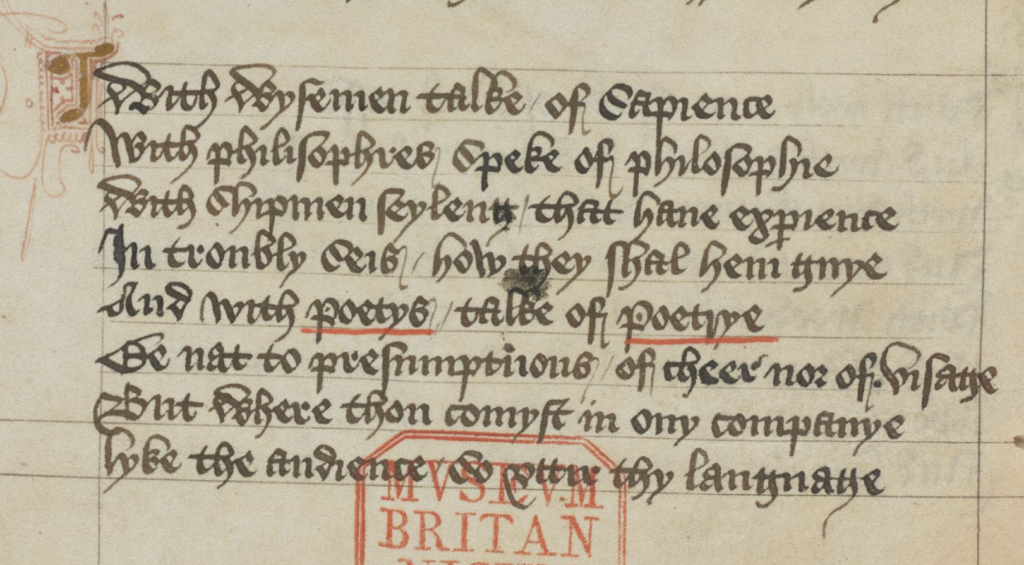
I have, as a side project, drafted a teaching book: a guide for students to help with the close reading of Middle English and Older Scots poetry. It is provisionally called How to Read Middle English and Older Scots Poetry.
Form and formalism have returned to prominence in recent years, and students continue to be taught in frameworks which expect close reading. Evidence suggests that they enjoy such teaching, and that it helps students with different pedagogical backgrounds and experiences to share their strengths with each other.
We also know more about the mechanics and construction of Middle English poetry than we used to. In the past three decades scholarship has significantly advanced in its understanding of Middle English alliterative verse, for instance. Similarly, new evidence has been unearthed and old findings recovered in our understanding of the relationship between syntax and rhyme.
These advances have not yet been gathered and made accessible for undergraduates and new graduate students. We have useful introductions to cultural and historical context, and fine companion volumes. Contextual introductions do not cover close reading, however, and chapters on versification in companion volumes limit themselves, for space reasons, to just one poet or to very brief accounts. Older books tend to assume student readers armed with a grasp of the International Phonetic Alphabet, basic philology, French and some Latin, making them less helpful and indeed sometimes quite offputting for today’s undergraduates.
General cross-period undergraduate-focused guides to close reading, meanwhile, barely discuss works from the ME period, and when they do they can mislead, accidentally, innocently, but seriously.
I know from my own experience as a student and then a teacher that a helpful book of concrete advice on understanding and commenting on the forms of earlier poetry would be very helpful. I’ve set out to write that book. It won’t explain all the mechanisms behind poetics in the period, or explore in a sustained way the story of those poetics—topics at which other scholars have been chipping away in more pure research writing—but it will calm and aid students.
And it’s been good fun to write! I’ve enjoyed working out how to fit in the widest possible range of examples, how to frame our knowledge of versification in the period in the clearest possible ways, how to bring out the particular, unique interests of Middle English as a topic, and how to link the material to modern poetry. I’ve learned things myself, too: it’s been a chance to grasp early poetry and poetics more thoroughly.
Early experiments in sharing the material with my students seem to have had good results, and I’m beginning to run draft chapters past friends and mentors. So, more news on this sooner rather than later, I hope. More news, too, on research, because this teaching book certainly hasn’t replaced my core scholarly work: watch this space!
Comments